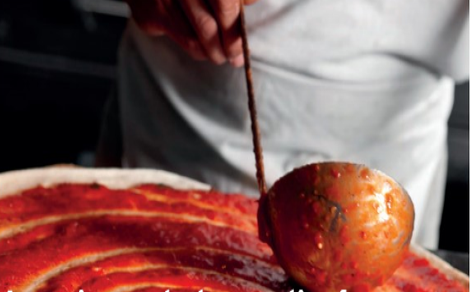Assessing product properties for optimal heat exchanger performance

Starch activation temperature: Once the product has reached this critical temperature, its viscosity increases rapidly.
Maillard reaction: This is a chemical reaction which results in food browning, often providing a distinctive flavour. However, in many
products, such as juices and smoothies, a fresh non-processed taste is important. Almost all food is pasteurised but understanding the temperature at which the Maillard reaction occurs means you can ensure that an apple-based smoothie tastes like fresh apples, rather than toffee apples, for example. Conversely where browning is required to give the product its taste, it is important to ensure that suitable temperatures are achieved during processing.
For some food products, additional organoleptic testing, including the sensory judgement of how a food feels in the mouth (known as psychorheology), may be required to ensure that processing the product has had the desired effect without any unwanted outcomes on quality.
Another measurement which relates to the potential effects of processing is how (or if) the viscosity and structure of the product recovers after processing; a property known as thixotropy. Specific methods for assessing this, such as the ‘viscometric 3-step thixotropy test’ have been developed.
How is the information used?
Once key parameters such as the viscosity and Non-Newtonian shear thinning factors are known, they can be used to select the best type of heat exchanger – for example, corrugated tubes will deliver heat transfer benefits in products which have a Reynolds number above 2,000 and which display transition or turbulent flow characteristics.
The measurements also allow designers to use heat exchanger software to calculate additional information, which is required for the design, but which cannot be directly measured in the laboratory. Some of the values which are calculated when designing a heat exchanger include:
Heat transfer coefficient
Flow type
Nusselt number (Nu): The ratio of convective heat transfer to heat transfer by conduction in the fluid. Higher Nusselt numbers represent effective heat transfer.
Prandtl number (Pr): The ratio of momentum diffusivity to the thermal diffusivity, representing the ratio of heat transfer to fluid motion.
Reynolds number (Re): The ratio between the fluid’s dynamic forces and viscous drag forces. Value indicates the flow regime, i.e. whether the flow can be described as laminar, transitional, or turbulent.
The various properties of the product are also entered into design and modelling software which uses computational fluid dynamics (CFD) to predict and study the flow of the product through the heat exchanger, and the thermal changes which occur. In order to do this accurately, the design temperature, pressure and maximum allowable pressure drop must be defined for the product and service fluids.
In short, the more information the manufacturer has on the physical properties of the product involved, the more accurate the design of the heat exchanger will be.
-
SMART Manufacturing & Engineering Week
04 - 05 June, 2025
NEC, Birmingham UK -
PPMA 2025
23 September, 2025, 9:30 - 25 September, 2025, 16:00
NEC, Birmingham UK -
Advanced Engineering Show 2025
29 October, 2025, 9:00 - 30 October, 2025, 16:00
NEC, Birmingham UK










